How Much is a Forest Elephant Worth
About $40,000 if you are a poacher!
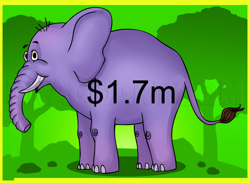 But, if you leave the animal to go about its daily routine and travel its historical pathways in peace it’s value for services provided to human society is $1.7 m – a remarkable 40-fold increase on the commercial value of the elephant’s tusks.
But, if you leave the animal to go about its daily routine and travel its historical pathways in peace it’s value for services provided to human society is $1.7 m – a remarkable 40-fold increase on the commercial value of the elephant’s tusks.
So if we add up all the elephants, insects, kangaroos, birdies, sea creatures, grasses, trees, and ecosystems, what is their net worth? Around $127 trillion per annum according to a recent study. To put that in perspective, it is more than twice the entire commercial activity of the world, as measured by global GDP! Further, the annual loss due to environmental degradation from 1997-2011 is estimated at $4.3-20.2 tn – 10-30% of GDP, or if you prefer, 3-13 times the net value of Amazon.
This information comes to us from a group of ecologists and economists who are collaborating to establish the value of the services that natural systems provide to human society in preparation for the Kunming UN Biodiversity and COP 15 Summit. And they are not alone. A growing group of global players from insurance companies to financiers and fund managers to the Nature Conservancy are now well aware of these values and are taking action accordingly.
So where do these services come from? At the macro scale we have: the cooling effect of forests, the flood amelioration capabilities of wetlands, the return on that special place from ecotourism, and the 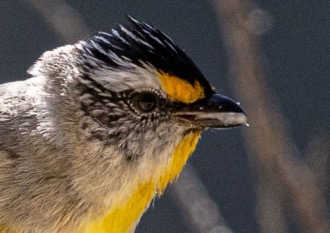 renewable food source provided by the oceans. Forests, native grasslands, and even whales sequester enormous amounts of carbon. At the microscale: bats consume their body weight in insects every night, blue tits collect up to 1,000 caterpillars per day to feed their brood, ladybird larva busily consume innumerable thrips, fungi break down the detritus of life and convert it into productive soil.
renewable food source provided by the oceans. Forests, native grasslands, and even whales sequester enormous amounts of carbon. At the microscale: bats consume their body weight in insects every night, blue tits collect up to 1,000 caterpillars per day to feed their brood, ladybird larva busily consume innumerable thrips, fungi break down the detritus of life and convert it into productive soil.
And how about that patch of remnant bushland in your paddock that demonstrably increases farm output by far more than ithe value of the land that it uses.
The importance of both ecosystem services and the closely-related need to avert the impacts of climate change no longer relies on the findings of a few scientists. Big business, finance, and investors have woken to their importance, as is demonstrated by the the World Economic Forum finding that environment and climate issues dominate both the most-likely and the highest-impact risks in a post-Covid world. 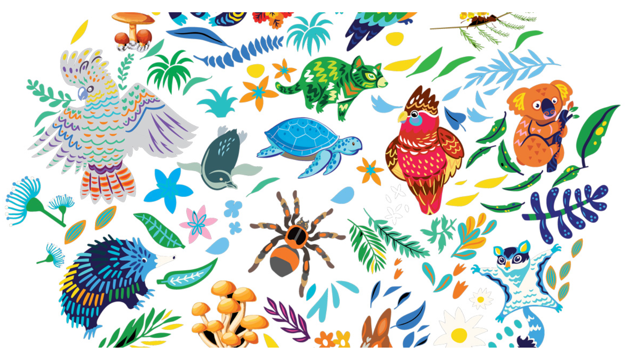
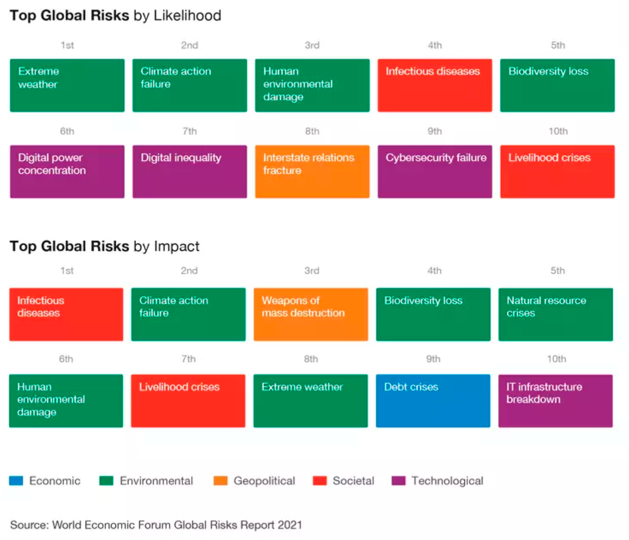 You might find it disturbing to put a crass commercial value on nature. Surely nature is more than just dollars! What of the sheer delight of being able to wander through Greens Bush? The amazement at coming across a grand forest giant reaching up to 100 m into the sky? The thrill of hearing a loud squawk and looking up to see a flash, an explosion of action, and a peregrine struggling away with its kill – a single feather floating gently down as your brain tries to assimilate the last second or two and the endorphins kick in?
You might find it disturbing to put a crass commercial value on nature. Surely nature is more than just dollars! What of the sheer delight of being able to wander through Greens Bush? The amazement at coming across a grand forest giant reaching up to 100 m into the sky? The thrill of hearing a loud squawk and looking up to see a flash, an explosion of action, and a peregrine struggling away with its kill – a single feather floating gently down as your brain tries to assimilate the last second or two and the endorphins kick in?
All these are important, indeed they are what motivates me. But they count for zero when a politician is assailed by special interest and lobbyist pressures in deciding whether to allow square kilometers of bush to be razed for marginal agriculture – or precious forests be logged to protect jobs. 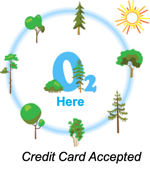 Here, an objective comparison of the relative value of retaining that bush compared to its commercial value is a powerful tool indeed.
Here, an objective comparison of the relative value of retaining that bush compared to its commercial value is a powerful tool indeed.
Perhaps we need to unionise the natural system – your bush could demand payment for the oxygen that it produces, or your fungi, insects, and invertebrates might insist on payment for their garbage-removal and soil-manufacturing services.
– Article by Greg Holland based on the indicated references and an article in the Guardian.